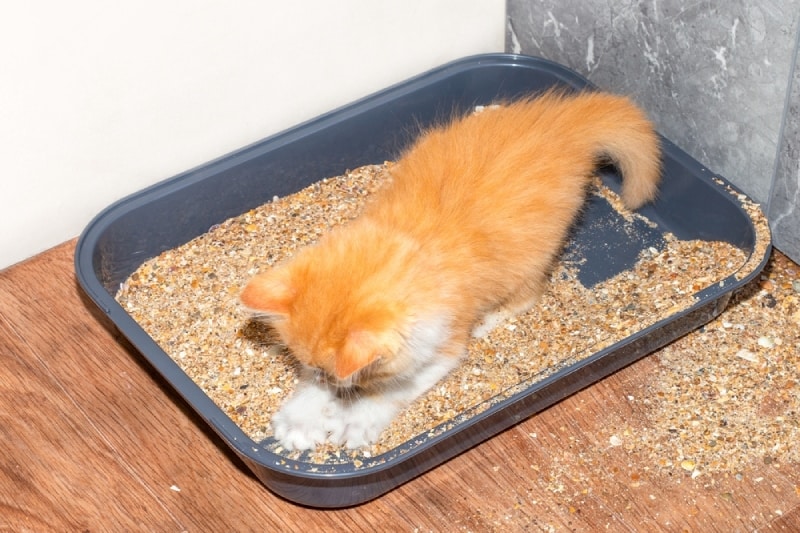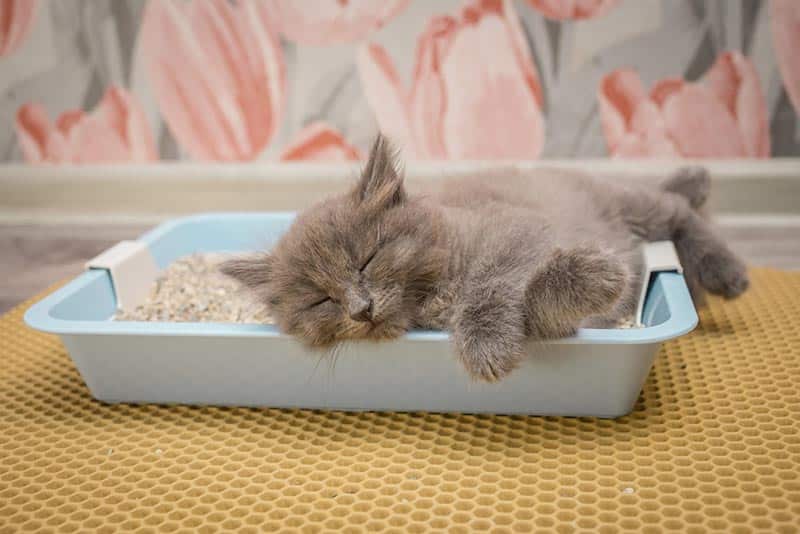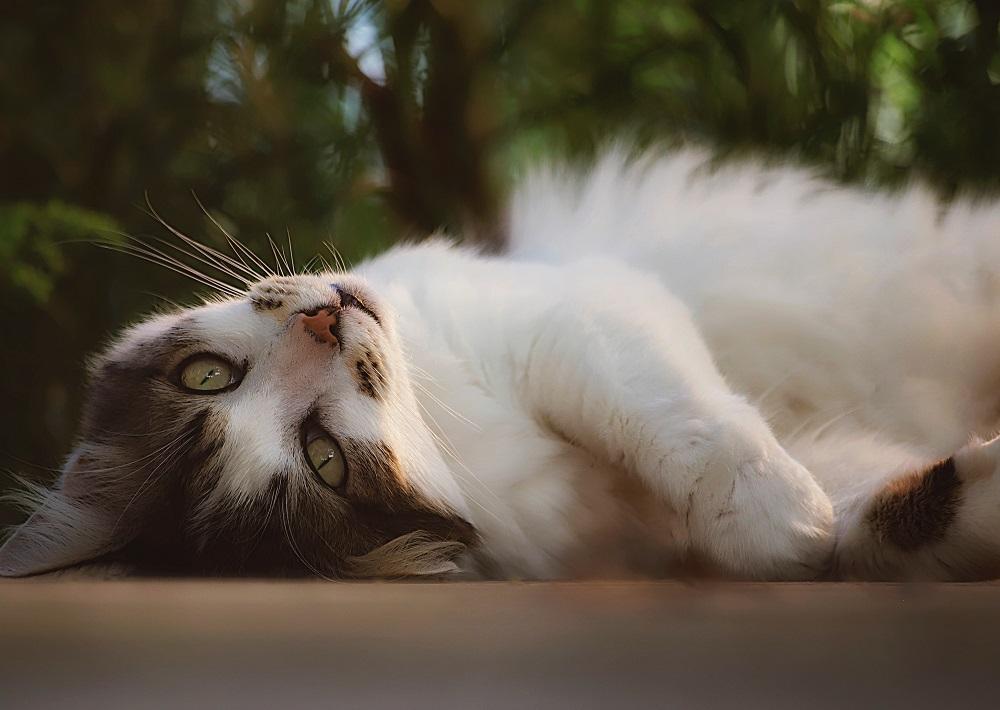
The sight of your cat gleefully rolling around in the litter box can be perplexing, leaving you wondering about their peculiar behavior. While it may seem strange to us, this act holds significance for cats, serving various purposes in their communication and feline instincts. This comprehensive guide delves into the world of feline litter box rolling, exploring the underlying reasons behind this intriguing behavior.
Introduction: The Enigma of Litter Box Rolling
Cat owners often witness their feline companions engaging in a curious ritual: rolling around in the litter box. This behavior, while seemingly odd, is a common occurrence among cats and serves various purposes. Understanding the motivations behind this act can provide valuable insights into your cat’s behavior and help you better care for their well-being.
Exploring the Reasons Behind Litter Box Rolling
Cats roll in the litter box for a variety of reasons, often driven by instinctual and social needs. Let’s delve into the key motivations behind this behavior:
-
Scent Marking: Cats possess scent glands throughout their bodies, and rolling in the litter box helps distribute their unique scent. This serves as a form of communication, marking their territory and reassuring them of their presence in familiar surroundings.
-
Stress Relief: Rolling can be a self-soothing mechanism for cats, helping to alleviate stress and anxiety. The physical act of rolling may release endorphins, promoting relaxation and a sense of comfort.
-
Playfulness: For some cats, litter box rolling can be a playful activity, similar to how kittens playfully roll around in the grass or on carpets. It’s a way for them to express their exuberance and engage in a form of self-amusement.
-
Physical Comfort: Cats may roll in the litter box simply because they find the texture and feel of the litter enjoyable. The soft, granular material may provide a sensation of comfort and relaxation.
-
Health Concerns: In some cases, excessive litter box rolling could indicate an underlying health issue, such as urinary tract discomfort or skin irritations. If you notice a sudden increase in rolling behavior, consult your veterinarian to rule out any medical concerns.

Observing Your Cat’s Behavior
Pay attention to the context and frequency of your cat’s litter box rolling. If it’s a regular occurrence and doesn’t seem excessive, it’s likely a normal behavior driven by instinct or playfulness. However, if it’s accompanied by other signs, such as vocalizing, urinating outside the box, or scratching excessively, it’s worth consulting your veterinarian to rule out any underlying issues.
Maintaining a Clean Litter Box
A clean and well-maintained litter box is essential for your cat’s overall well-being and can help reduce the likelihood of excessive rolling. Scoop the litter box daily, remove waste completely, and change the litter regularly to keep it fresh and inviting.
Providing Enrichment Opportunities
Boredom and stress can contribute to litter box rolling. Ensure your cat has plenty of enrichment opportunities, such as interactive toys, scratching posts, and climbing structures, to keep them mentally and physically stimulated.
Creating a Harmonious Environment
Minimize stress in your cat’s environment by providing a quiet, safe space, avoiding sudden changes, and maintaining a consistent routine. A calm and supportive environment can help reduce stress-induced rolling behavior.
Understanding and Appreciating Feline Behavior
Litter box rolling is a natural behavior for many cats and serves various purposes in their communication and well-being. By understanding the reasons behind this behavior, observing your cat’s patterns, and providing a supportive environment, you can help your feline friend feel comfortable, secure, and content. Remember, cats are complex creatures with unique personalities and needs. By taking the time to understand their behavior and providing them with a loving and enriching home, you can foster a strong bond and create a harmonious relationship with your furry companion.
Additional Considerations
-
Cat Preferences: Some cats may be more prone to litter box rolling than others. Observe your cat’s individual behavior and adjust your approach accordingly.
-
Veterinary Advice: If you have any concerns about your cat’s litter box rolling behavior, consult with your veterinarian for personalized advice.
-
Patience and Understanding: Understanding feline behavior takes time and patience. Observe your cat closely, learn their cues, and provide them with the care and attention they need to thrive.
Remember, maintaining a clean and odor-free litter box is essential for both your cat’s comfort and your own. By understanding the reasons behind litter box rolling, implementing effective odor control methods, and creating a supportive environment, you can ensure your feline friend has a happy and healthy home.
Addressing Excessive Litter Box Rolling: When Playful Becomes Problematic
While occasional litter box rolling is a normal feline behavior, excessive rolling can indicate underlying issues. Here’s how to distinguish between normal play and a potential problem:
-
Frequency and Intensity: Observe the frequency and intensity of your cat’s rolling. Occasional, gentle rolling is likely harmless. However, frequent, vigorous rolling, especially accompanied by yowling or scratching, might warrant further investigation.
-
Changes in Litter Box Habits: Monitor your cat’s overall litter box habits. Are they urinating outside the box? Avoiding the box altogether? These changes, coupled with excessive rolling, could point to health concerns or litter box dissatisfaction.
-
Stressful Events: Consider recent changes in your cat’s environment or routine. New pets, a move, or loud noises could trigger stress-induced rolling. Addressing the source of stress can help alleviate the behavior.
-
Consulting Your Veterinarian: If you’re concerned about your cat’s rolling behavior, schedule a veterinary checkup. Your veterinarian can rule out any underlying medical conditions that might be causing discomfort.

Dietary Adjustments for a Healthy Urinary Tract and Reduced Odor
Certain dietary modifications can promote a healthy urinary tract and reduce litter box odor, potentially minimizing rolling behavior:
-
High-Quality Cat Food: Choose a high-quality cat food formulated for your cat’s age and health needs. Look for ingredients rich in moisture and low in grains, as these can contribute to concentrated urine.
-
Increased Water Intake: Encourage your cat to drink more water. Provide multiple water bowls in different locations, use a pet fountain, or explore adding water to your cat’s food. Increased water intake dilutes urine, reduces odor, and promotes urinary tract health.
-
Veterinary-Recommended Supplements: Consult your veterinarian about potential dietary supplements that can benefit your cat’s urinary tract health. These may include cranberry extract or omega-3 fatty acids.
By implementing these dietary adjustments, you can potentially improve your cat’s urinary tract health, reducing discomfort and minimizing the urge to roll in the litter box.
Creating a Cat-Friendly Litter Box Environment: Location, Size, and Cleaning
The design, location, and cleanliness of the litter box can significantly impact your cat’s comfort and litter box habits, potentially influencing rolling behavior:
-
Litter Box Placement: Choose a quiet, easily accessible location for the litter box. Avoid placing it near loud appliances or high-traffic areas. Consider using a covered litter box if your cat prefers privacy.
-
Multiple Litter Boxes: For multi-cat households, provide one litter box per cat, plus an extra one. This reduces competition and ensures your cat has access to a clean box whenever needed.
-
Appropriate Litter Box Size: Choose a litter box that’s spacious enough for your cat to comfortably turn around and eliminate. Cramped litter boxes can lead to discomfort and aversion, potentially leading to rolling outside the box.
-
Regular Scooping and Cleaning: Scoop the litter box daily to remove waste. Completely replace the litter every week or more often, depending on the number of cats and the litter type. Regularly clean the litter box with warm water and a mild detergent to remove any lingering odors.
By creating a comfortable and inviting litter box environment, you encourage your cat to use the box properly and potentially reduce the urge to roll in it.
Engaging Enrichment Activities for a Stimulated and Happy Cat
Boredom and lack of stimulation can contribute to excessive litter box rolling. Enrich your cat’s life by providing them with engaging activities:
-
Interactive Toys: Rotate a variety of interactive toys to keep your cat entertained. Puzzle feeders, feather wands, and catnip-filled toys can stimulate their hunting instincts and provide mental exercise.
-
Scratching Posts: Provide multiple scratching posts in different textures and locations. Scratching posts help cats fulfill their natural scratching needs and prevent them from scratching furniture.
-
Climbing Structures: Consider adding cat trees or wall-mounted shelves to your home. These provide vertical space for climbing, perching, and observing their surroundings, reducing boredom and encouraging natural behaviors.
-
Schedule Playtime: Dedicate regular playtime sessions to your cat. Engage them in interactive games, chase them with a laser pointer, or provide them with a stimulating scratching session.
By providing ample enrichment and stimulating activities, you can help your cat expend energy, alleviate boredom, and minimize the need for attention-seeking behaviors like rolling in the litter box.
